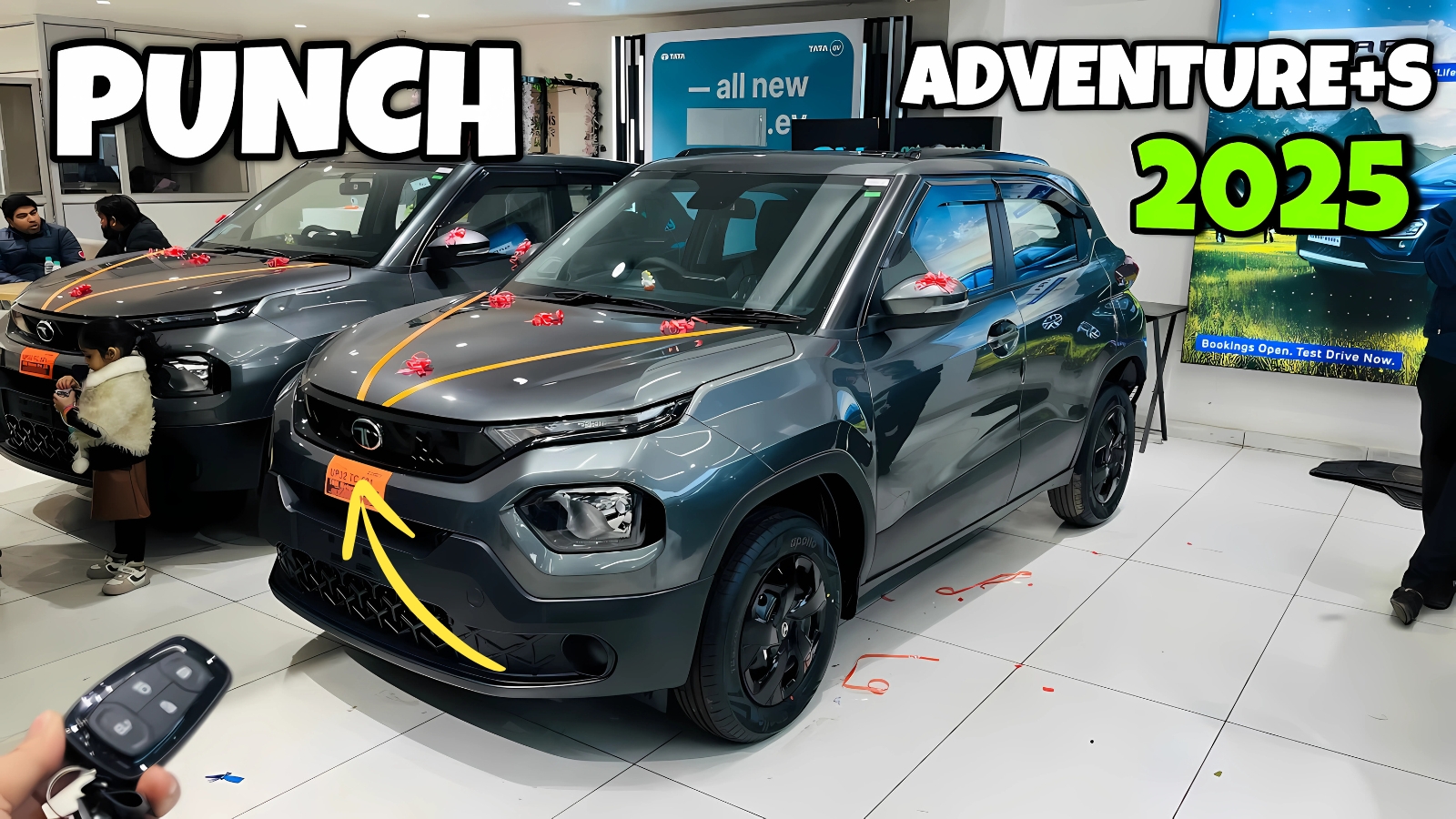Tata Punch: When Tata Motors unveiled the Punch in 2021, skeptics wondered whether the Indian market really needed another compact vehicle wearing SUV clothes. The answer came swiftly through sales charts and customer testimonials that painted a different picture entirely. This wasn’t just another attempt to capitalize on India’s SUV obsession – it was a carefully engineered solution to urban mobility challenges that mainstream manufacturers had largely ignored. The Punch proved that size doesn’t determine capability, that affordability doesn’t mean sacrificing safety, and that Tata’s design renaissance was more than just surface-level styling improvements. But how did this micro-SUV manage to carve out such a significant niche in India’s crowded automotive landscape?
Tata Punch Design Brilliance: Making Small Look Substantial
The Punch’s exterior design represents a masterclass in visual proportion management. Tata’s design team faced the challenge of creating authentic SUV presence within the constraints of a sub-4-meter footprint, and their solution demonstrates sophisticated understanding of how design elements influence perception. The result is a vehicle that photographs larger than its actual dimensions while maintaining the rugged aesthetic that Indian buyers associate with serious SUVs.
The front fascia establishes the Punch’s character immediately through its bold grille design and distinctive headlamp configuration. The split headlamp setup, with LED DRLs positioned high and main beams located in the bumper, creates visual drama while providing excellent illumination. This design choice also allows for better approach angles during off-road adventures, showing how form follows function in thoughtful automotive design.
Plastic cladding throughout the body serves both aesthetic and practical purposes. Unlike many vehicles where such elements feel tacked-on, the Punch’s cladding integrates naturally with the overall design while providing genuine protection against minor scrapes and dings that plague urban vehicles. The wheel arch extensions and side sills create visual bulk that enhances the SUV appearance without looking cartoonish.
The rear design maintains visual interest through well-proportioned taillamps and a chunky bumper design that reinforces the rugged character. The spare wheel cover, while not housing an actual spare tire, adds to the adventurous aesthetic while providing practical storage space that owners appreciate.
Color options reflect careful market research, with vibrant shades like Flame Red and Calypso Red appealing to younger buyers seeking personality, while conservative options like Tornado Blue and Arctic Silver satisfy more traditional preferences.
Interior Innovation: Space Maximization Through Smart Design
Stepping inside the Punch reveals how creative engineering can overcome dimensional limitations. The cabin feels significantly more spacious than exterior measurements suggest, achieved through careful attention to packaging efficiency and visual design tricks that enhance the perception of space. The dashboard design creates visual width through horizontal elements and strategic color placement.
The driving position strikes an excellent balance between SUV-like command and car-like accessibility. Unlike larger SUVs where entry requires climbing, the Punch offers the perfect compromise that makes drivers feel confident in traffic while remaining comfortable for daily use. The steering wheel adjusts for height, helping drivers of different sizes find optimal positions.
Rear seat accommodation genuinely surprises first-time passengers. Despite the compact footprint, adult passengers can sit comfortably for urban commutes and short highway trips. The upright seating position maximizes headroom while the clever floor design optimizes legroom. The rear seats also split-fold to expand cargo capacity when needed.
Technology integration shows Tata’s evolving understanding of modern buyer expectations. The touchscreen infotainment system supports smartphone connectivity and provides clear graphics that enhance usability. More importantly, the interface responds quickly to inputs and integrates well with the overall cabin design rather than feeling like an afterthought.
Safety Leadership: Setting New Standards
The Punch’s safety credentials represent perhaps its most significant achievement. Earning a five-star Global NCAP rating, this micro-SUV demonstrated that affordable vehicles could meet international safety standards without compromising affordability. This achievement challenged industry assumptions about the relationship between price and protection.
Structural engineering throughout the Punch reflects advanced safety thinking typically associated with premium vehicles. High-strength steel construction, optimized crumple zones, and intelligent airbag deployment systems work together to protect occupants during various impact scenarios. The achievement becomes more impressive considering the dimensional constraints engineers faced.
Performance Reality: Adequate Power, Exceptional Efficiency
The Punch’s 1.2-liter naturally aspirated petrol engine produces 86 horsepower, figures that sound modest but translate to adequate performance for intended use cases. The engine character emphasizes smooth operation and fuel efficiency over excitement, creating a powertrain that suits urban commuting perfectly while handling highway driving adequately.
Real-world fuel efficiency consistently exceeds 18 kilometers per liter under mixed driving conditions, making the Punch economical enough for budget-conscious buyers while providing the SUV aesthetics they desire. The manual transmission operates smoothly, while the AMT option offers convenience without significant efficiency penalties.
Tata Punch Market Success: Right Product, Perfect Timing
Tata positioned the Punch strategically between traditional hatchbacks and compact SUVs, with pricing starting around ₹6 lakhs. This positioning captured buyers who wanted SUV presence but couldn’t justify premium SUV pricing, creating a new segment that competitors quickly rushed to enter.

